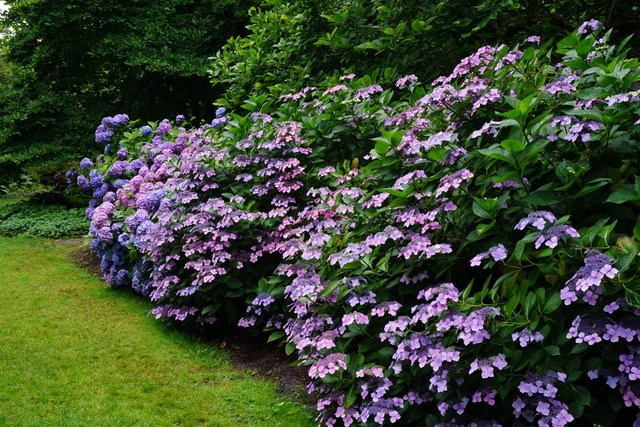I just noticed that my hydrangeas in the garden are a sopping brown mess, hit recently by the cold and wet weather.
I had a bit of trouble with one of my several hydrangeas in my garden this summer. Usually a prolific bloomer, not a single flower appeared this year. I thought maybe that I had pruned it too early in the spring. I usually prune all my hydrangeas down to the third healthiest green sprout in the spring.
Proven Winners has a great article online about pruning hydrangeas. The first step is to identify what type of hydrangea you have. Some hydrangeas have new growth on new wood and some types on the old wood.
After reading the article, “Hydrangeas Demystified," I determined my confused hydrangea is the Bigleaf type, Hydrangea macrophylla. It is also known as mophead, lacecap, hortensia or florist’s hydrangea. This type of hydrangea blooms on old wood. The suggestion from Proven Winners is not to prune and to protect the plant in the winter. Your best bet is to choose plants that will not get too big or locate this type of hydrangea in area that can be left alone. This type of hydrangea produces the beautiful heavy blooms that have made dazzling dried colourful flower arrangements in my house that last many years.
This past summer, I planted a variety of hydrangeas known as Hydrangea paniculate in my next door neighbour’s garden. It is also known as peegee hydrangea. I chose the “limelight” variety with its beautiful lime white flowers for their garden. These type of hydrangea bloom on new wood. Proven Winners suggests that I should prune this type of hydrangea in late winter or early spring. Prune just as the new growth starts to emerge. Remove up to one-third of the height each year to encourage healthy new growth and strong stems to support the growth.
Another variety of hydrangea is known as the Annabelle hydrangea, hydrangea arborescens. It blooms on new wood so again, you would prune in late winter or early spring. Our very own Paulik Park has a substantial amount of this type of hydrangea in the gardens.
A gorgeous variety of hydrangea is called the Oakleaf variety, hydrangea quercifolia. The leaves of this hydrangea add an element of structural beauty to a garden. The blooms are immense and lush, very similar to the peegee hydrangea’s blooms. This type blooms on old wood so the message is not to prune, and to instead protect in the winter.
Hydrangeas prefer moist, well-drained soil. They do not like to get their feet wet - ever! Hydrangeas do best in a location where they will get at least four hours of sun, ideally in the morning.
Paulik Park is chock-full of many different varieties of hydrangeas best viewed in full bloom late spring and early summer. Our hydrangeas in the park continue blooming right into the fall.
Lessons have been learned today. I will leave my hydrangeas that bloom on old wood and will look forward to many blossoms sometime in May!
Lynda Pasacreta is the current president of the Richmond Garden Club. For more information visit richmondgardenclub.ca.



